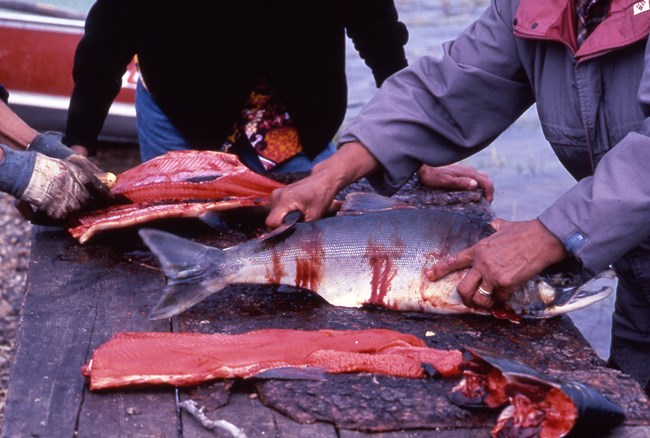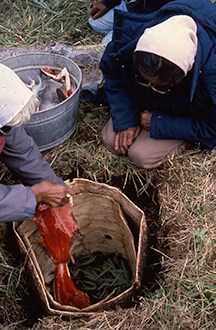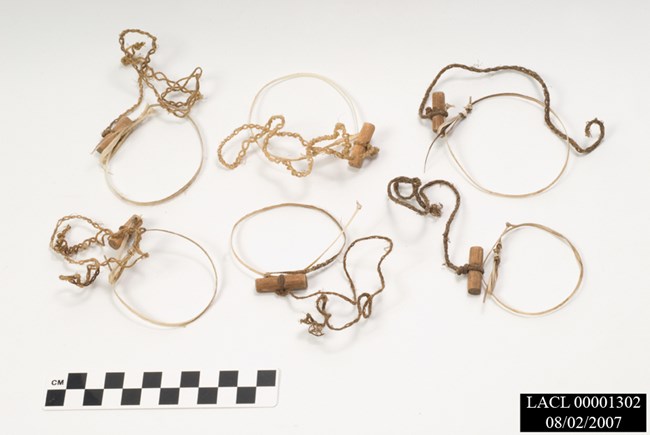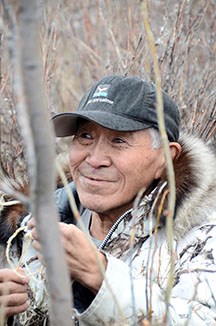
NPS Photo

NPS Photo

NPS photo
Snaring, one of the most common methods of harvesting small game, was traditionally done during the fall by women and girls in the Lake Clark area. During fall hunting, local Dena'ina families went in to the mountains in search of caribou, Dall's sheep, and moose. While the men hunted big game, one woman would watch the infants and the rest of the women and children went out into the mountains, trapping ground squirrels and birds with snares such as these, or more recently, with small steel traps. Individual snares would be set where the birds tended to rest, land or feed.
Young Dena'ina girls were taught how to set snares for ground squirrels among other chores - this way they would never be totally dependent on males providing them food and raw materials. Ground squirrel meat was eaten, and their pelts were made into many things - parkas, underwear, pants, blankets, and other clothing.

NPS photo
Last updated: May 9, 2017
